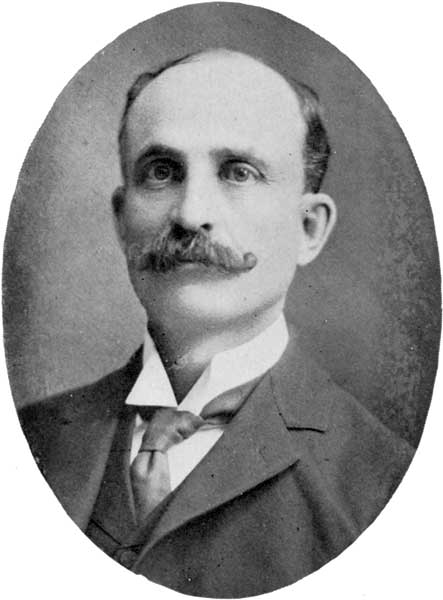 |
Theodore Arthur Burrows
|
Lawyer, surveyor, lumberman, MLA (1892-1895), MLA (1896-1899), MLA (1900-1903), MP (1904-1908), Lieutenant-Governor of Manitoba (1926-1929).
Born at Ottawa on 15 August 1857, son of Henry T. Burrows and Sarah Burrows, grandson of John Henry Burrows (first settler on the site of Ottawa, then Bytown, and engineer in charge of building Rideau Canal from Ottawa to Kingston, Ontario), Theodore Burrows came to Manitoba in 1875 to work as a surveyor. Two years later, he entered the law office of Frederick Mackenzie of Winnipeg, being the first law student in the city. He then enrolled in Manitoba College to study law, soon leaving to join his uncle, Alfred W. Burrows (the first land agent in Winnipeg, who advertised and sold lots in a subdivision in 1874), in real estate. He entered the lumber business in 1878 and soon moved to the Dauphin area, where he accumulated large timber holdings.
He operated the Theodore Burrows Lumber Company; he was also President of the Phoenix Lumber Company operating in Alberta, president of the Northern Lumber Company operating retail yards in Manitoba and Saskatchewan, president of the Ontario, Manitoba and Western Land Company, and Director of the British Crown Mortgage Company. Between 1897 and 1904, he was Land Commissioner for Canadian National Railways, being instrumental in having the railway line built through the Dauphin district.
In 1892 he was Dauphin’s first (Liberal) MLA, and he was re-elected in 1896 and 1899. While in the legislature he was an active booster of a railway to Dauphin, and when it was built in 1896 by William Mackenzie and Donald Mann as the Lake Manitoba Railway and Canal Company, he became its land commissioner. This gave him inside knowledge of future development. From 1904 to 1908, he was Member for Dauphin in the House of Commons, being defeated at the 1908 general election. He was one of Clifford Sifton’s political lieutenants in the province, and he remained so after his departure from politics. (Sifton was Burrows’ brother-in-law, being married to his sister Elizabeth Arma Burrows.) This gave Burrows further inside knowledge, and there were constant rumours and complaints of corruption. He spent his last years in office fending off Tory charges of excessive corruption. In 1926 he was appointed Lieutenant-Governor of Manitoba.
Burrows married Georgie Kathleen Creasor (1872-1953, daughter of D. A. Creasor of Owen Sound, Ontario) with whom he had two children: Elizabeth Kathleen Burrows (1906-1987, wife of Jack Sheridan Lightcap) and Theodore Arthur Burrows. In 1900, he and his family moved to Winnipeg, living at 187 Kennedy Street (1903-?) and 246 Roslyn Road (?-?). He was on the board of Wesley College, and he served as First Worshipful Master of Vermillion Lodge, AF and AM, Dauphin.
He died at Winnipeg on 18 January 1929 and was buried in the Elmwood Cemetery. There are papers at the Archives of Manitoba. He is commemorated by Burrows Avenue in Winnipeg.
See also:
Historic Sites of Manitoba: Burrows School No. 1122 (RM of Dauphin)
Historic Sites of Manitoba: Burrows Mill Site (Burrows Street, Grandview)
Grandview and Theodore A. Burrows by Donald F. Parrot
Manitoba History, Number 21, Spring 1991“T. A. Burrows, 1857-1929: Case Study of a Manitoba Businessman and Politician” by Deborah Welch, MA thesis, University of Manitoba, 1983.
A History of Manitoba: Its Resources and People by Prof. George Bryce, Toronto: The Canadian History Company, 1906.
The Story of Manitoba by F. H. Schofield, Winnipeg: The S. J. Clarke Publishing Company, 1913.
Pioneers and Prominent People of Manitoba, Winnipeg: Canadian Publicity Company, 1925.
Death registration, Manitoba Vital Statistics.
Dictionary of Manitoba Biography by John M. “Jack” Bumsted, Winnipeg: University of Manitoba Press, December 1999, 288 pages.
“Free Press Necrology Files,” Winnipeg Elite Study, G. Friesen Fonds, Mss 154, Box 15, File 16, University of Manitoba Archives]
We thank Jordan Makichuk for providing additional information used here.
This page was prepared by Gordon Goldsborough.
Page revised: 27 May 2024
Memorable Manitobans
This is a collection of noteworthy Manitobans from the past, compiled by the Manitoba Historical Society. We acknowledge that the collection contains both reputable and disreputable people. All are worth remembering as a lesson to future generations.
Search the collection by word or phrase, name, place, occupation or other text:
Custom SearchBrowse surnames beginning with:
A | B | C | D | E | F | G | H | I | J | K | L | M | N | O | P | Q | R | S | T | U | V | W | Y | ZBrowse deaths occurring in:
1975 | 1976 | 1977 | 1978 | 1979 | 1980 | 1981 | 1982 | 1983 | 1984 | 1985 | 1986 | 1987 | 1988 | 1989 | 1990 | 1991 | 1992 | 1993 | 1994 | 1995 | 1996 | 1997 | 1998 | 1999 | 2000 | 2001 | 2002 | 2003 | 2004 | 2005 | 2006 | 2007 | 2008 | 2009 | 2010 | 2011 | 2012 | 2013 | 2014 | 2015 | 2016 | 2017 | 2018 | 2019 | 2020 | 2021 | 2022 | 2023 | 2024 | 2025
Send corrections and additions to this page
to the Memorable Manitobans Administrator at biographies@mhs.mb.caCriteria for Memorable Manitobans | Suggest a Memorable Manitoban | Firsts | Acknowledgements
Help us keep
history alive!